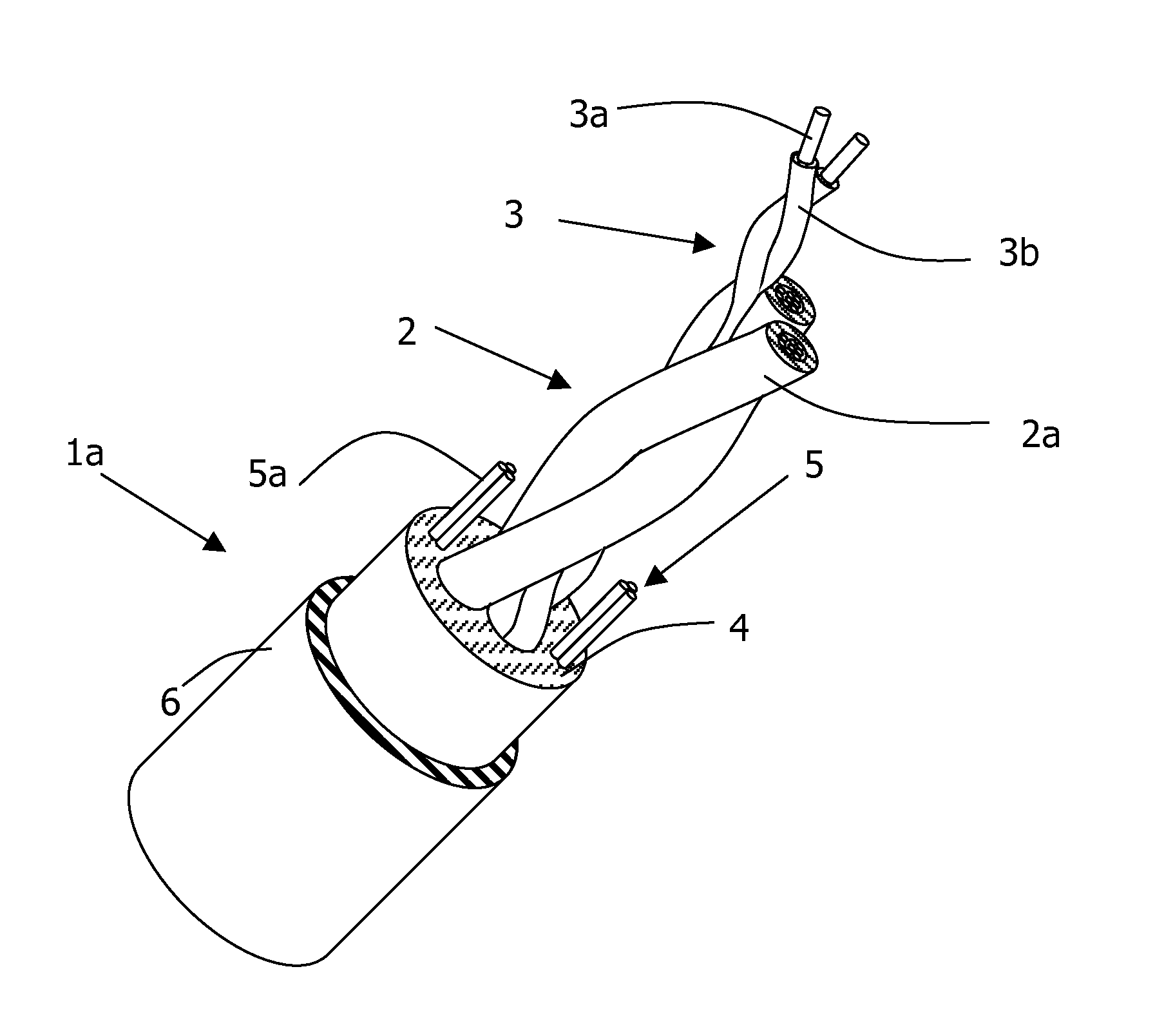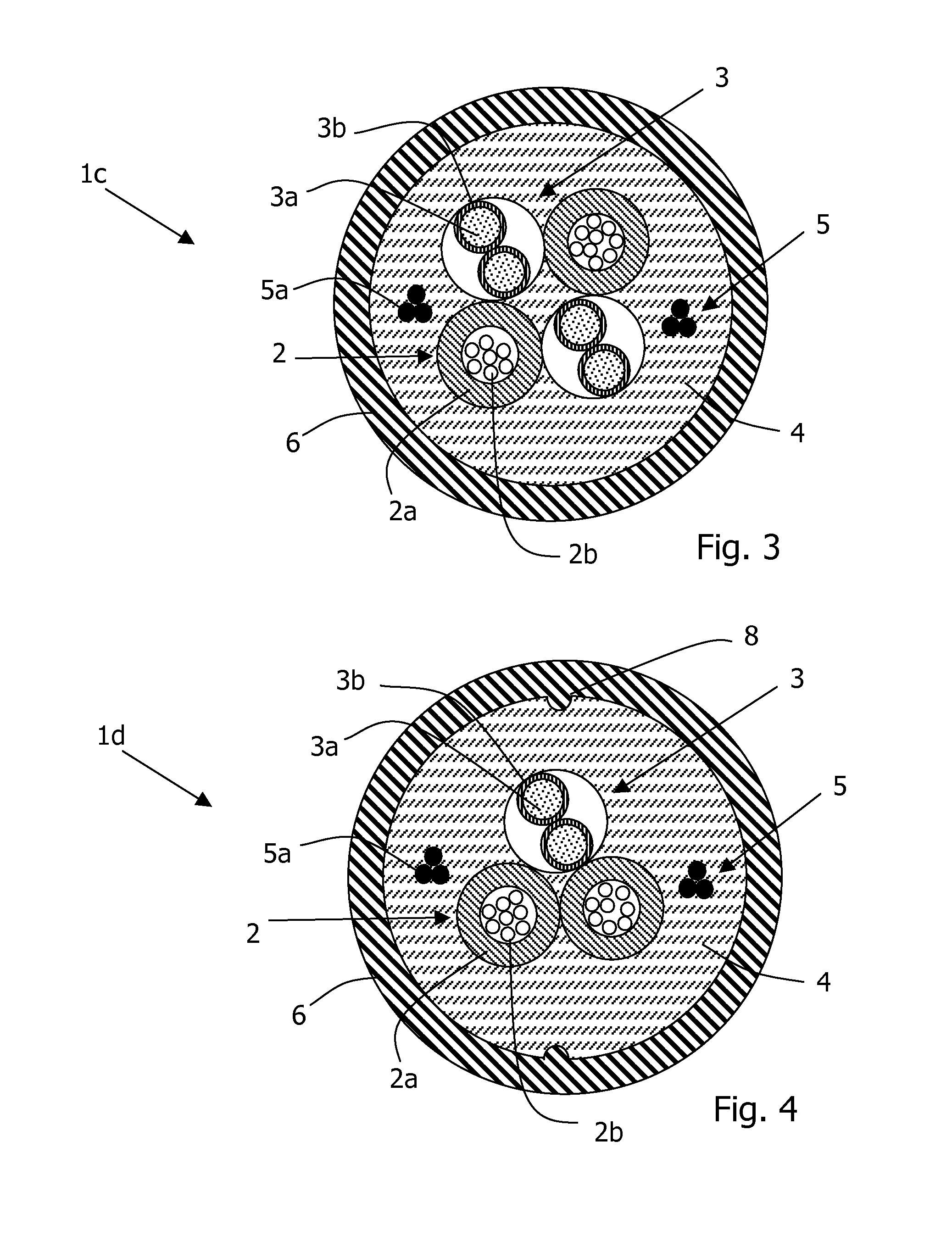Multipurpose optical fibre drop cable
a drop cable and optical fibre technology, applied in the field of optical fibre cables, can solve the problems of affecting all the components of the cable, straining the drop cable, and external mounting drop cables are subject to additional variable loading, etc., and achieve the effect of increasing tensile performance and improving tensile performan
- Summary
- Abstract
- Description
- Claims
- Application Information
AI Technical Summary
Benefits of technology
Problems solved by technology
Method used
Image
Examples
Embodiment Construction
[0064]FIG. 1 shows a cable is according to the present disclosure. Cable 1a includes two optical fibre units 2 each comprising a tube 2a housing a number of optical fibre 2b (generally twelve, though the drawing shows eight only).
[0065]Typically the optical fibres 2b are loosely housed within the tube 2a, so that substantially no mechanical coupling is there between fibres 2b and tube 2a, thereby preventing a load applied to the tube from being transmitted to the fibres.
[0066]The optical fibre unit 2 is stranded with a stranding element that, in the depicted case, is a twisted pair 3 of insulated electric conductors, each comprising a copper conductor 3a surrounded by an insulating layer 3b. The insulating layer 3b can be made, for example, of a mixture of propylene homopolymer or copolymer and ethylene copolymer comprising an inorganic filler, for example aluminium or magnesium hydroxide, as described, for example, in EP 0 893 801, EP 0 893 802 or WO 99 / 05688.
[0067]Optical fibre un...
PUM
| Property | Measurement | Unit |
|---|---|---|
| temperature | aaaaa | aaaaa |
| angle | aaaaa | aaaaa |
| radial stripping force | aaaaa | aaaaa |
Abstract
Description
Claims
Application Information
 Login to View More
Login to View More - R&D
- Intellectual Property
- Life Sciences
- Materials
- Tech Scout
- Unparalleled Data Quality
- Higher Quality Content
- 60% Fewer Hallucinations
Browse by: Latest US Patents, China's latest patents, Technical Efficacy Thesaurus, Application Domain, Technology Topic, Popular Technical Reports.
© 2025 PatSnap. All rights reserved.Legal|Privacy policy|Modern Slavery Act Transparency Statement|Sitemap|About US| Contact US: help@patsnap.com



